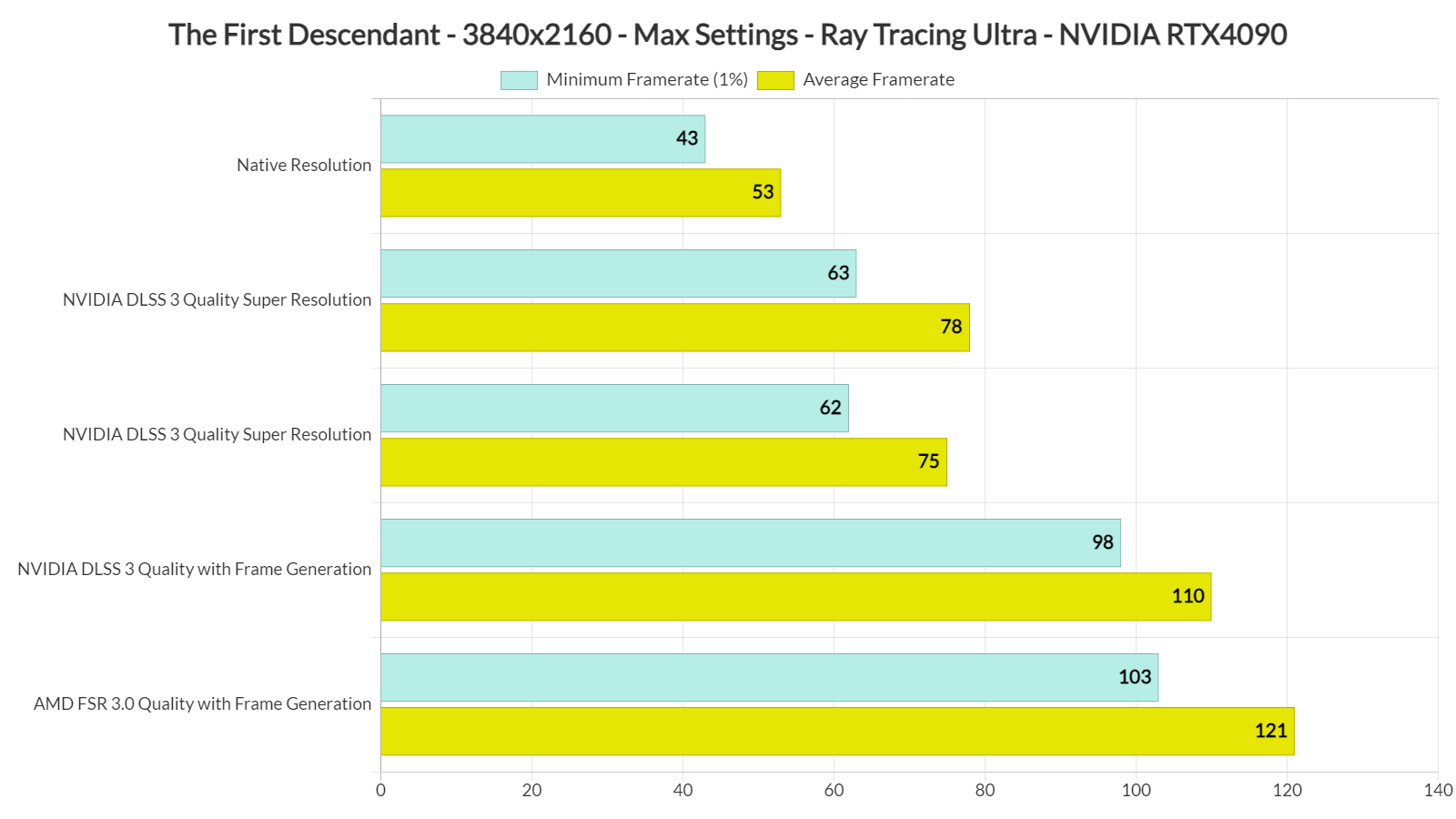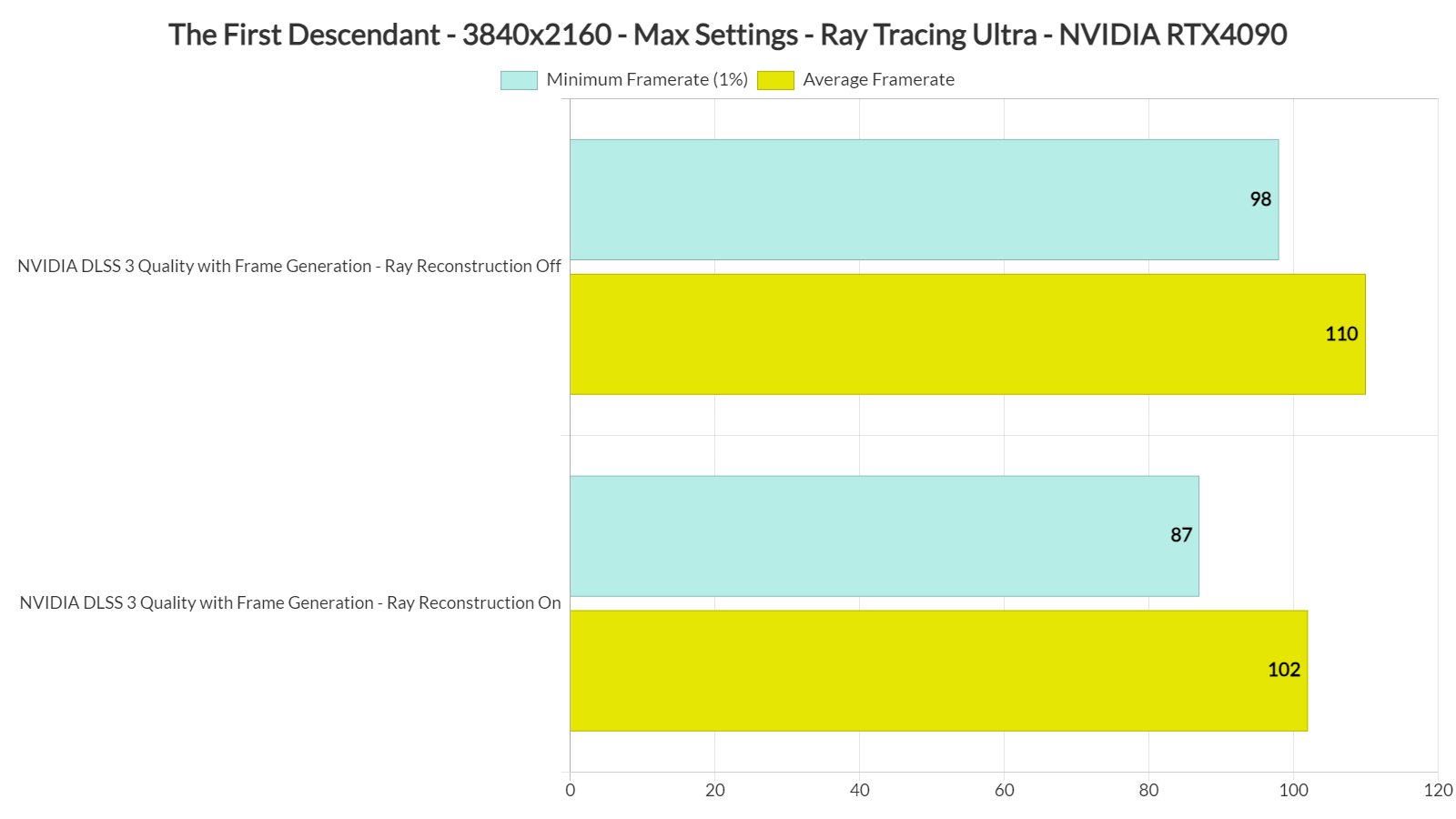A couple of days ago, NEXON released its free-to-play third-person looter shooter, The First Descendant, on PC. Powered by Unreal Engine 5, this game supports both NVIDIA DLSS 3 and AMD FSR 3.0. As such, we’ve decided to benchmark them and compare them. Can AMD’s upscaling and frame generation tech compete with NVIDIA’s offering in this title? Time to find out.
For these benchmarks and screenshot comparisons, we used an AMD Ryzen 9 7950X3D, 32GB of DDR5 at 6000Mhz, and NVIDIA’s GeForce RTX 4090. I also used Windows 10 64-bit, and the GeForce 556.12 WHQL driver. Moreover, I’ve disabled the second CCD on our 7950X3D.
Before continuing, I should note some major crashing issues we’ve experienced while testing the game. The First Descendant is a crashing mess, even on AMD’s high-end CPUs. The game was constantly crashing during the Shader Compilation process. These crashes weren’t due to temperature issues. Instead, the game would simply stop responding and crash on the desktop (as you can see in the following image).
The only way we were able to fix this was by disabling its Ray Tracing effects from the main menu, before loading a save. By doing that, the game was able to complete its shader compilation procedure. So, if you encounter crashing issues during that process, we suggest disabling RT. And, if for some reason you want to use the RT effects, you can enable them once the game has loaded.
With this out of the way, let’s take a look at some comparison screenshots between DLSS 3 and FSR 3.0. DLSS 3 is on the left, whereas FSR 3.0 is on the right.
At first glance, AMD FSR 3.0 seems to be doing an incredible job. By using ICAT, though, we can see that DLSS 3 produces a crisper and sharper image than FSR 3.0. Still, this is a game in which FSR 3.0 appears to be almost as good as DLSS 3. Even during fast camera movements, the visual artifacts of FSR 3.0 were kept to a minimum. You can easily spot them in the final comparison around the character. However, they are not as awful as those we’ve seen in other titles. So, DLSS 3 still has the upper hand, but if you don’t have an RTX40 series GPU, I highly recommend using AMD FSR 3.0 as it also allows you to enable Frame Generation.
Speaking of Frame Generation, AMD FSR 3.0 Frame Generation is a bit faster than the NVIDIA DLSS 3 Frame Generation. The difference is not as big as the one we’ve seen in other games. Still, this is another game in which AMD FSR 3.0 FG is faster than NVIDIA DLSS 3 FG, even on NVIDIA’s RTX40 series GPUs. Not only that but input latency felt the same, and I could not spot any visual artifacts in real-time with either of them.
It’s also worth noting that DLSS 3.5 Ray Reconstruction comes with a noticeable performance hit in this title. As we can see, DLSS 3 RR will decrease your performance by up to 12%. This really surprised me as in other games, DLSS 3.5 RR was not THAT heavy. Not only that but since the game’s Ray Tracing effects are not that great (at least IMO), it’s not worth using RT or DLSS 3.5 RR.
All in all, the AMD FSR 3.0 implementation in The First Descendant is great. As such, PC gamers can use it to boost their performance. NVIDIA DLSS 3 remains the king here, but FSR 3.0 can actually compete with it!

John is the founder and Editor in Chief at DSOGaming. He is a PC gaming fan and highly supports the modding and indie communities. Before creating DSOGaming, John worked on numerous gaming websites. While he is a die-hard PC gamer, his gaming roots can be found on consoles. John loved – and still does – the 16-bit consoles, and considers SNES to be one of the best consoles. Still, the PC platform won him over consoles. That was mainly due to 3DFX and its iconic dedicated 3D accelerator graphics card, Voodoo 2. John has also written a higher degree thesis on the “The Evolution of PC graphics cards.”
Contact: Email












